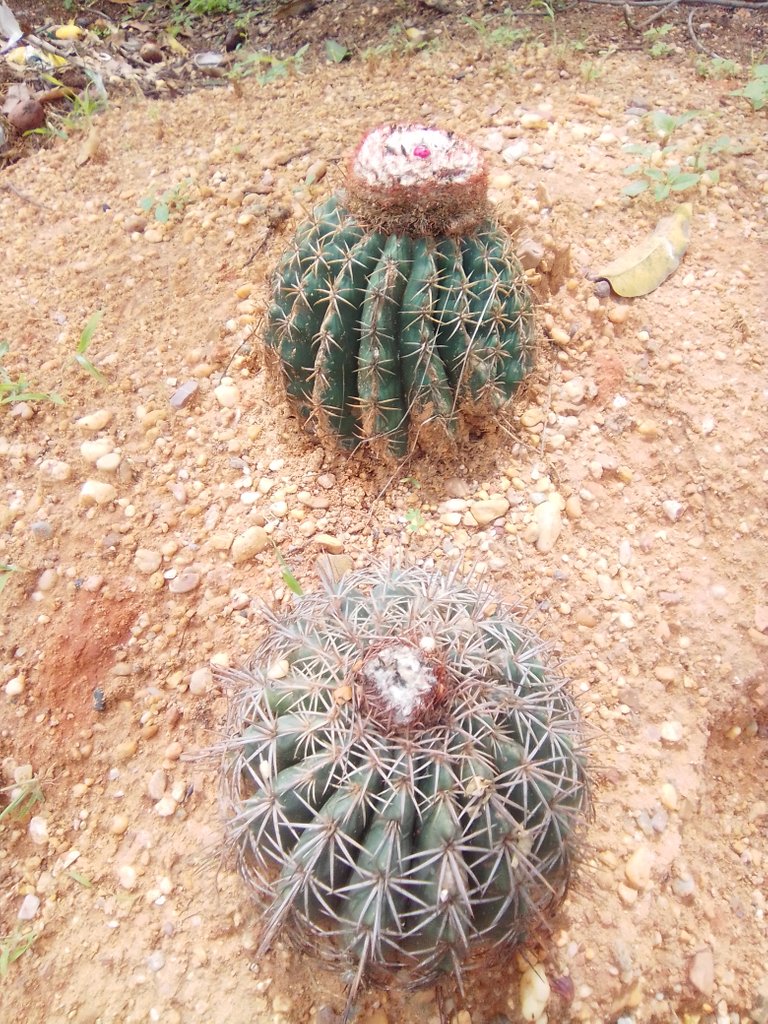
Saludos distinguidos amigos. Es muy agradable vivir todo lo que ha promovido está maravillosa comunidad de Hive.
Ha sido una herramienta muy útil para compartir muchos rasgos de nuestra diferentes culturas, de nuestro entorno, nuestras vivencias y de nuestros ecosistemas.
Cada parte del mundo tienen su diversidad hasta en su ecosistema y siempre vamos a tener algo que compartir con el resto de nuestros queridos amigos a nivel mundial.
Y en este respecto quería compartir con ustedes unas imágenes de una especie de captus, que no se que tan común sea en las regiones dónde ustedes viven, pero creo que no es muy común sobre todo en Europa o África, aunque tengan algunas otras especies de captus.
Este lo conocemos acá en Venezuela como Pichiguey y tiene un aspecto muy peculiar: es de forma "cono-ovoidal" (característica que acabo de inventar) porque tiene forma de cono pero a la vez con forma de huevo.
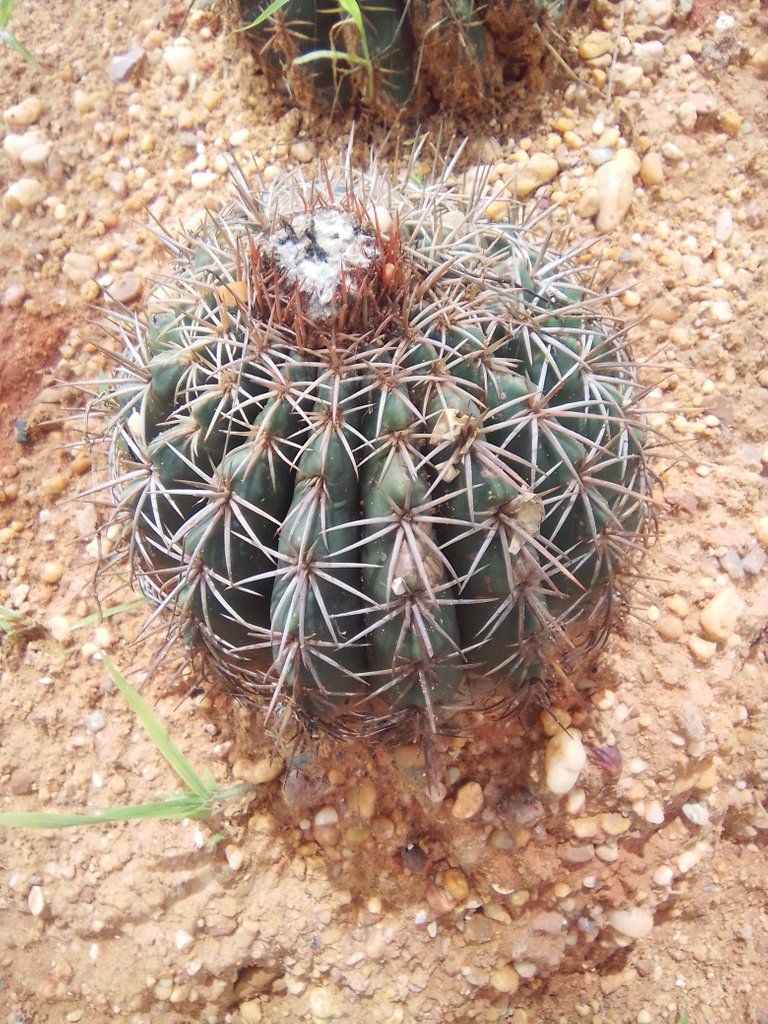
Posee grandes y fuertes espinas, un centro acolchado con una especie de algodón natural, que ocupa hasta el centro del captus.
Mide entre 20 a 25 centímetros de alto y al rededor de 20 centímetros de diámetro.
En el centro acolchado es donde está especie produce tanto sus flores como su fruto, lo que es como un capullo como una especie de sustancia gelatinosa y con muchas semillas muy pequeñas.
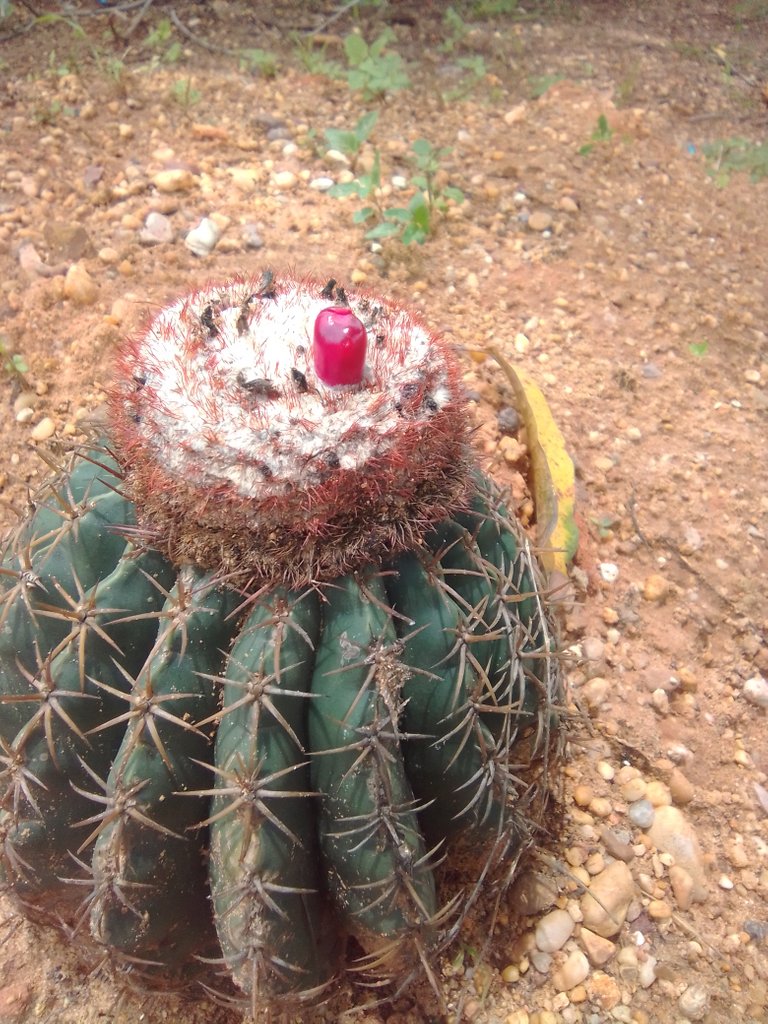
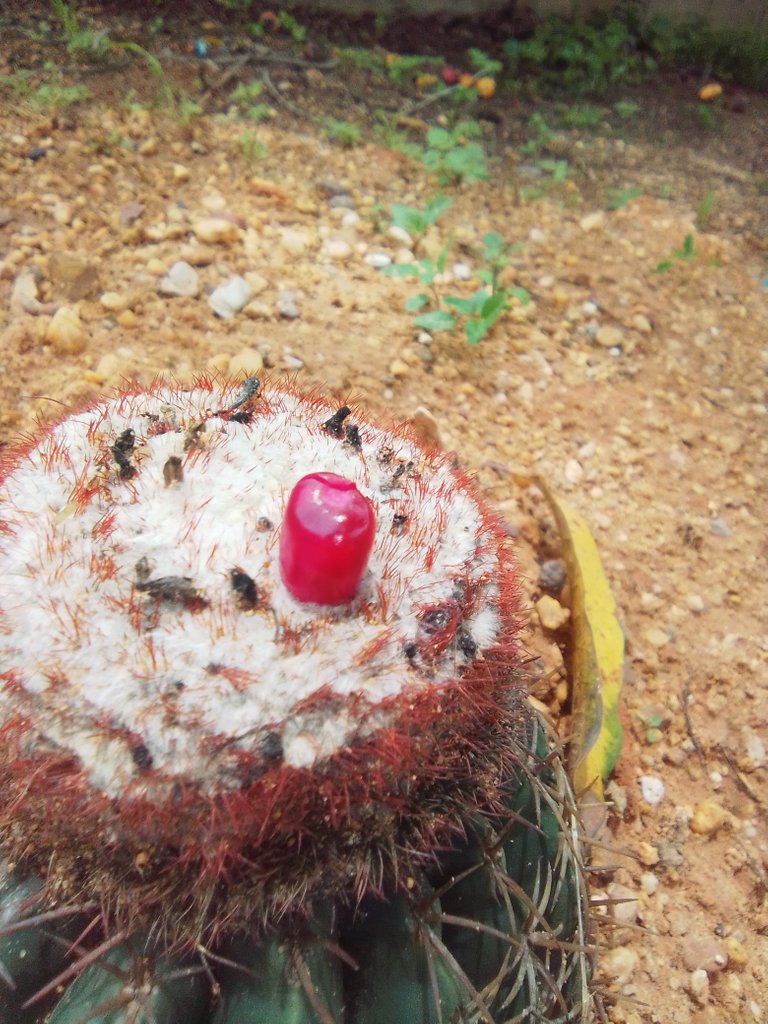
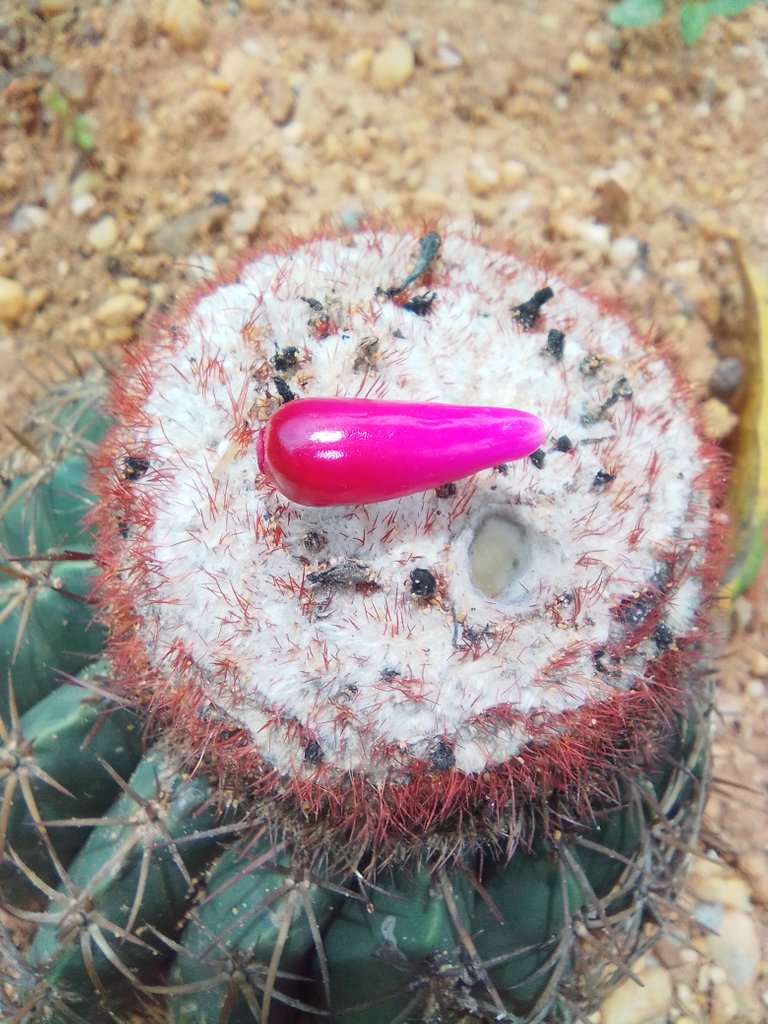
El pequeño fruto va emergiendo de forma natural de dentro de ese algodón gradualmente hasta quedar totalmente expuesto al exterior.
Claro, esto sucede en el transcurso de algunos días, y a veces uno no se da cuenta y ya están fuera totalmente
Tiene un vistoso color rojo y eso lo hace muy llamativo para las especies animales que lo consumen, y eso ayuda a propagar su existencia.
Por otro lado, las flores son muy atractivas, pero en el momento que capture las imágenes no era temporada de flores sino de dar frutos.
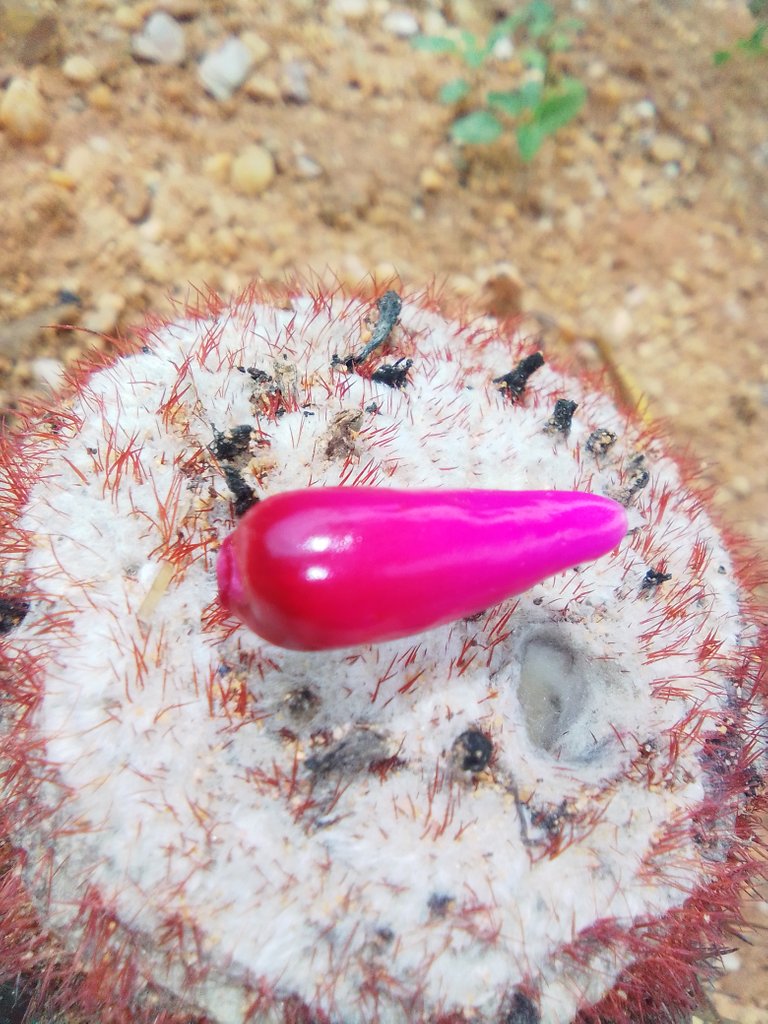
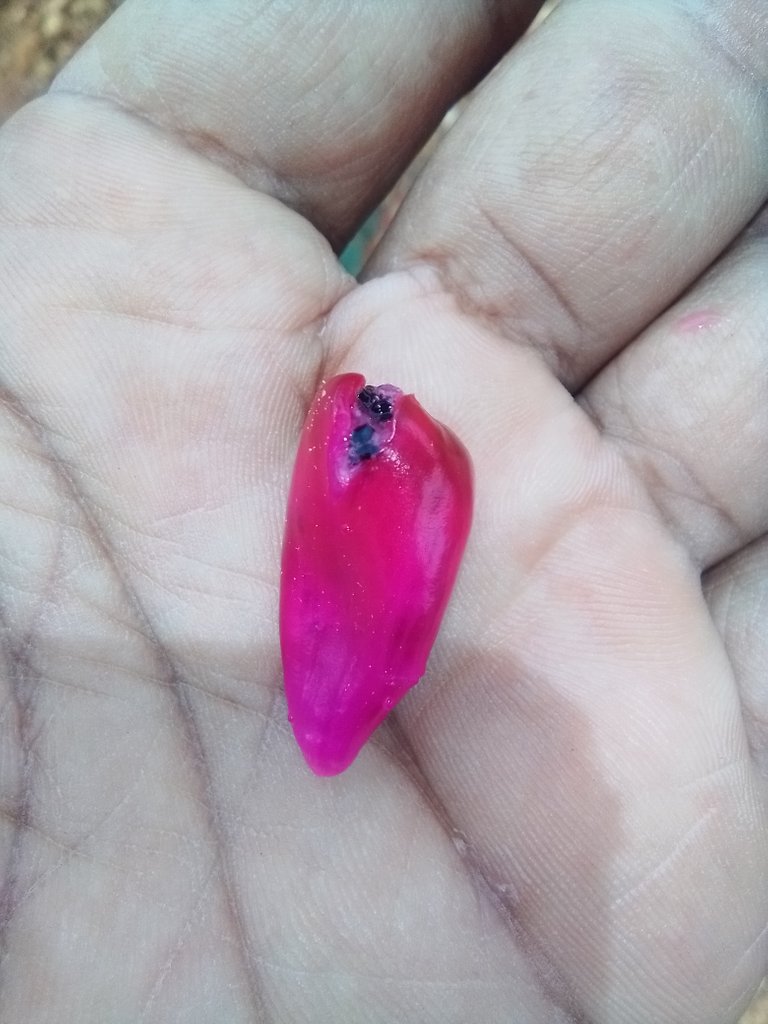
Otro aspecto de esta especie que la hace muy popular en nuestro país son las propiedades medicinales que, según nuestros ancestros, posee el cuerpo de este captus.
Se le atribuyen propiedades diuréticas y beneficiosas para el sistema urinario del ser humano, sobre todo cuando se sospecha de la existencia de cálculo renal u otra deficiencia o irritación.
Por supuesto, no estamos dando indicaciones, solo hacemos referencia a lo que nuestros mayores han atribuido al pichiguey.
En el área donde yo vivo, basta con salir a caminar por las adyacencias del pueblo y podemos encontrar, dentro de la gran variedad de captus, al pichiguey.
Quise compartir esta reseña con ustedes, porque me pareció muy bueno que el resto del mundo que no conoce estás peculiaridades de nuestro entorno lo conozcan.
Los dos pichiguey de las fotos los tengo sembrados en mi casa. Es asombroso como se adaptaron al suelo que traté que fuera lo más parecido al que tenían en su estado natural: suelo pedregoso y seco.
Estos tienen aproximadamente 4 años conmigo.
Saludos y espero también conocer algunas especies que firmen parte de la diversidad natural de sus países.

Greetings distinguished friends. It is very nice to experience all that this wonderful Hive community has promoted.
It has been a very useful tool to share many features of our different cultures, our environment, our experiences and our ecosystems.
Every part of the world has its diversity even in its ecosystem and we will always have something to share with the rest of our dear friends worldwide.
And in this respect I wanted to share with you some images of a species of captus, which I don't know how common it is in the regions where you live, but I think it is not very common especially in Europe or Africa, although they have some other species of captus.
This one is known here in Venezuela as Pichiguey and it has a very peculiar aspect: it is "cono-ovoidal" (a characteristic that I just invented) because it is cone-shaped but at the same time egg-shaped.

It has large and strong spines, a center padded with a kind of natural cotton, which occupies up to the center of the captus.
It measures between 20 to 25 centimeters high and about 20 centimeters in diameter.
In the padded center is where this species produces both its flowers and its fruit, which is like a cocoon as a kind of gelatinous substance and with many very small seeds.



The small fruit emerges naturally from inside the cotton gradually until it is fully exposed to the outside.
Of course, this happens over the course of a few days, and sometimes you don't even realize it and they are already fully exposed to the outside.
It has a showy red color and that makes it very striking to the animal species that eat it, and that helps to propagate its existence.
On the other hand, the flowers are very attractive, but at the time I captured the images it was not flowering season but fruiting season.
Another aspect of this species that makes it very popular in our country are the medicinal properties that, according to our ancestors, the body of this captus possesses.
It is attributed diuretic and beneficial properties for the urinary system of the human being, especially when there is a suspicion of kidney stones or other deficiency or irritation.
Of course, we are not giving indications, we only refer to what our elders have attributed to the pichiguey.
In the area where I live, it is enough to go for a walk around the town and we can find, among the great variety of captus, the pichiguey.
I wanted to share this review with you, because I thought it was very good that the rest of the world that does not know these peculiarities of our environment know it.
The two pichiguey in the photos are planted in my house. It is amazing how they adapted to the soil that I tried to make as close as possible to the one they had in their natural state: stony and dry soil.
These are about 4 years old with me.
Greetings and I also hope to meet some species that sign part of the natural diversity of your countries.

This type of cactus is really unique! I don't see this kind here at my place so its nice to see different flowers and plants all over the world through people here on Hive! Just letting you know, we also have a niche community dedicated to these types of plants! Check out the Succulent growers! You can interact with other succulent lovers there!
Also, I do encourage you to connect with other people here on Hive. Read and other people's blogs and engage with them! That way, you can grow your audience here!
¡Este tipo de cactus es realmente único! No veo este tipo aquí en mi casa, ¡así que es bueno ver diferentes flores y plantas en todo el mundo a través de la gente aquí en Hive! ¡Solo para informarle que también tenemos una comunidad de nicho dedicada a este tipo de plantas! ¡Mira los cultivadores de suculentas! ¡Puedes interactuar con otros amantes de las suculentas allí!
Además, los animo a que se conecten con otras personas aquí en Hive. ¡Lea los blogs de otras personas e interactúe con ellos! ¡De esa manera, puedes aumentar tu audiencia aquí!
Saludos y mucho éxito en tus proyectos.Hola, muchos saludos @indayclara , gracias por el apoyo, y que bueno saber que dentro de Hive existe una comunidad dedicada a este tipo de plantas. Muchas gracias por informarlo.
Congratulations @afonzovalle21! You have completed the following achievement on the Hive blockchain and have been rewarded with new badge(s):
Your next target is to reach 70 posts.
You can view your badges on your board and compare yourself to others in the Ranking
If you no longer want to receive notifications, reply to this comment with the word
STOPTo support your work, I also upvoted your post!
Check out the last post from @hivebuzz:
Support the HiveBuzz project. Vote for our proposal!
Nice photos 👍
Thank you